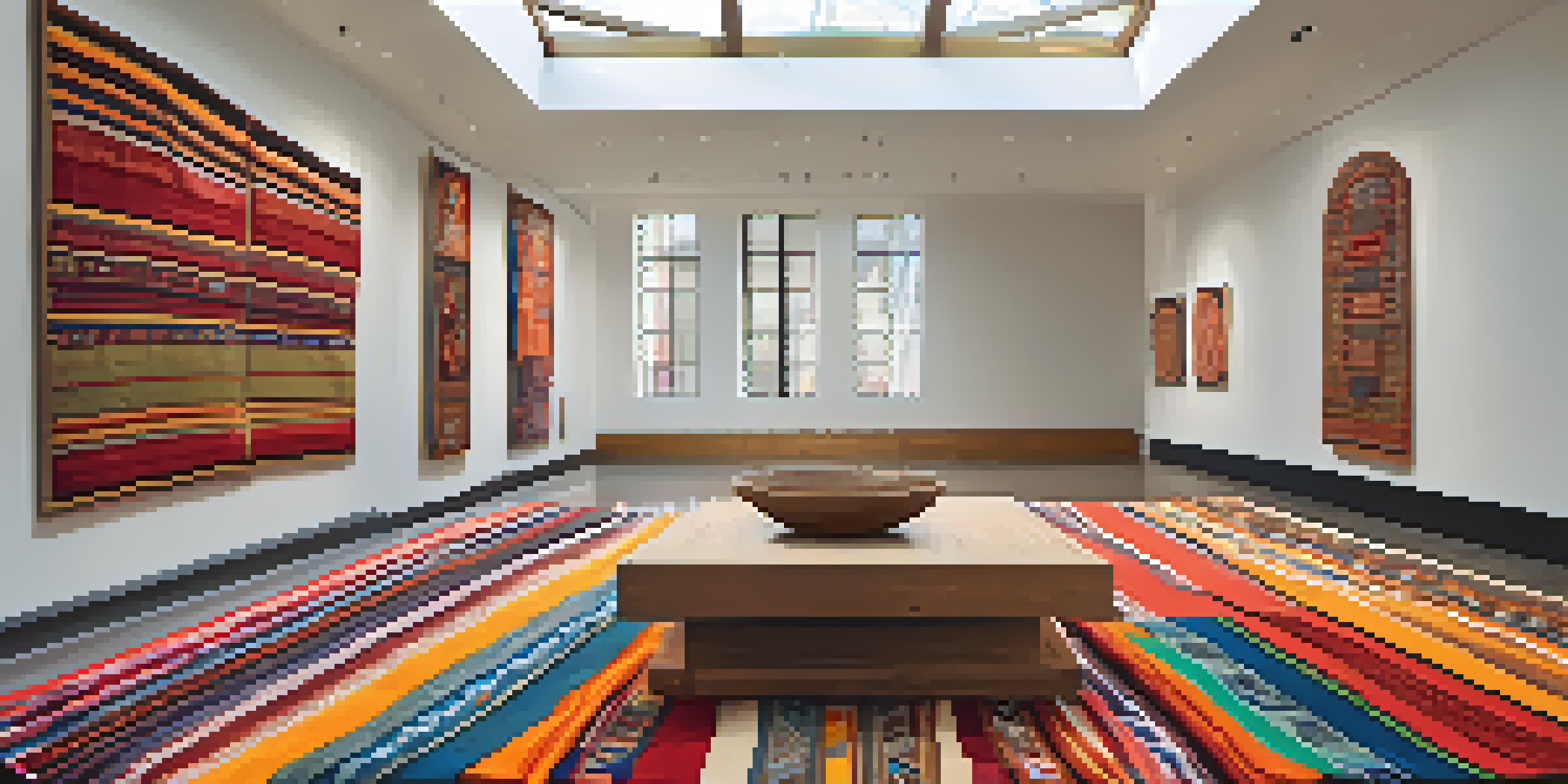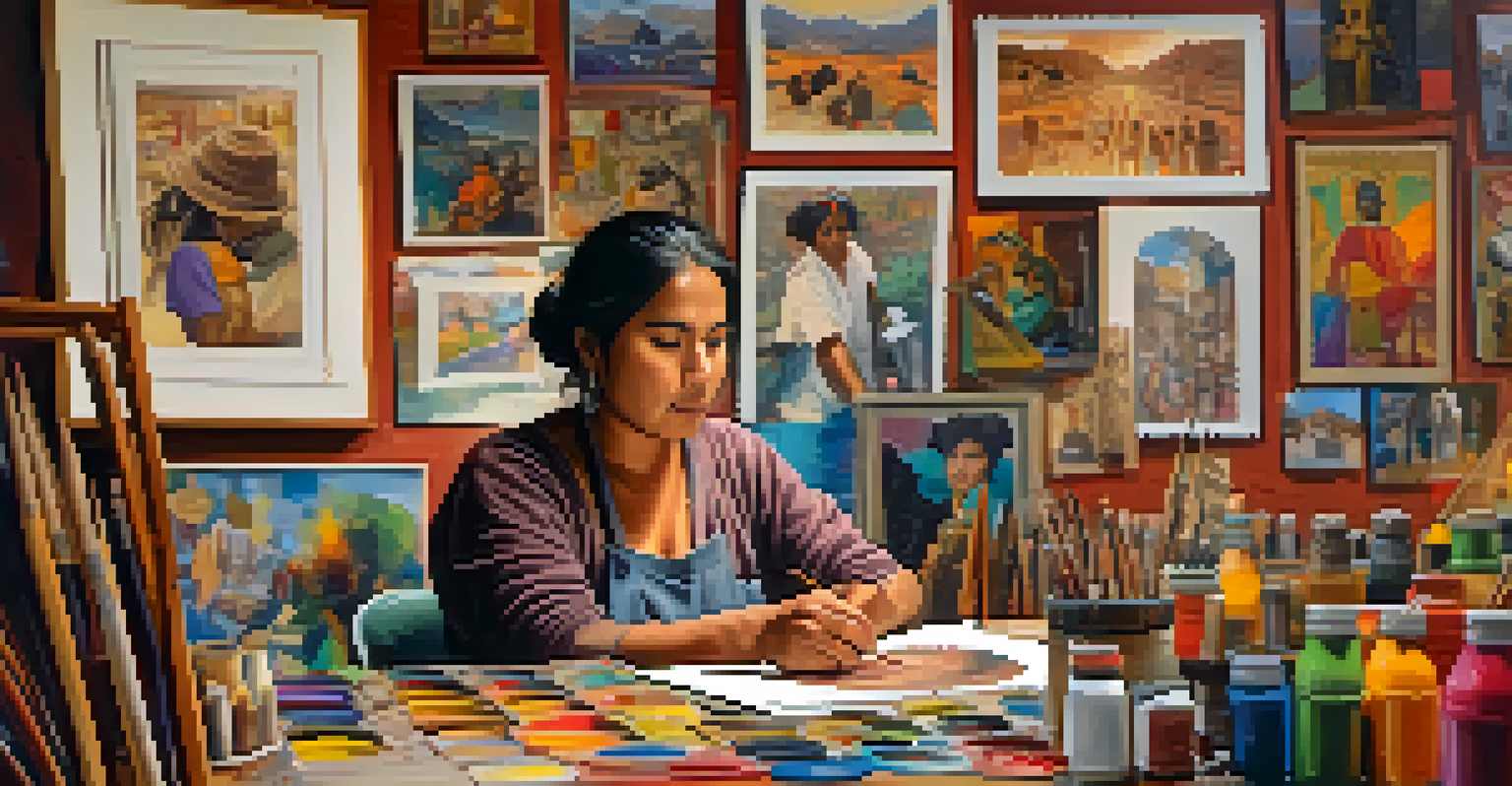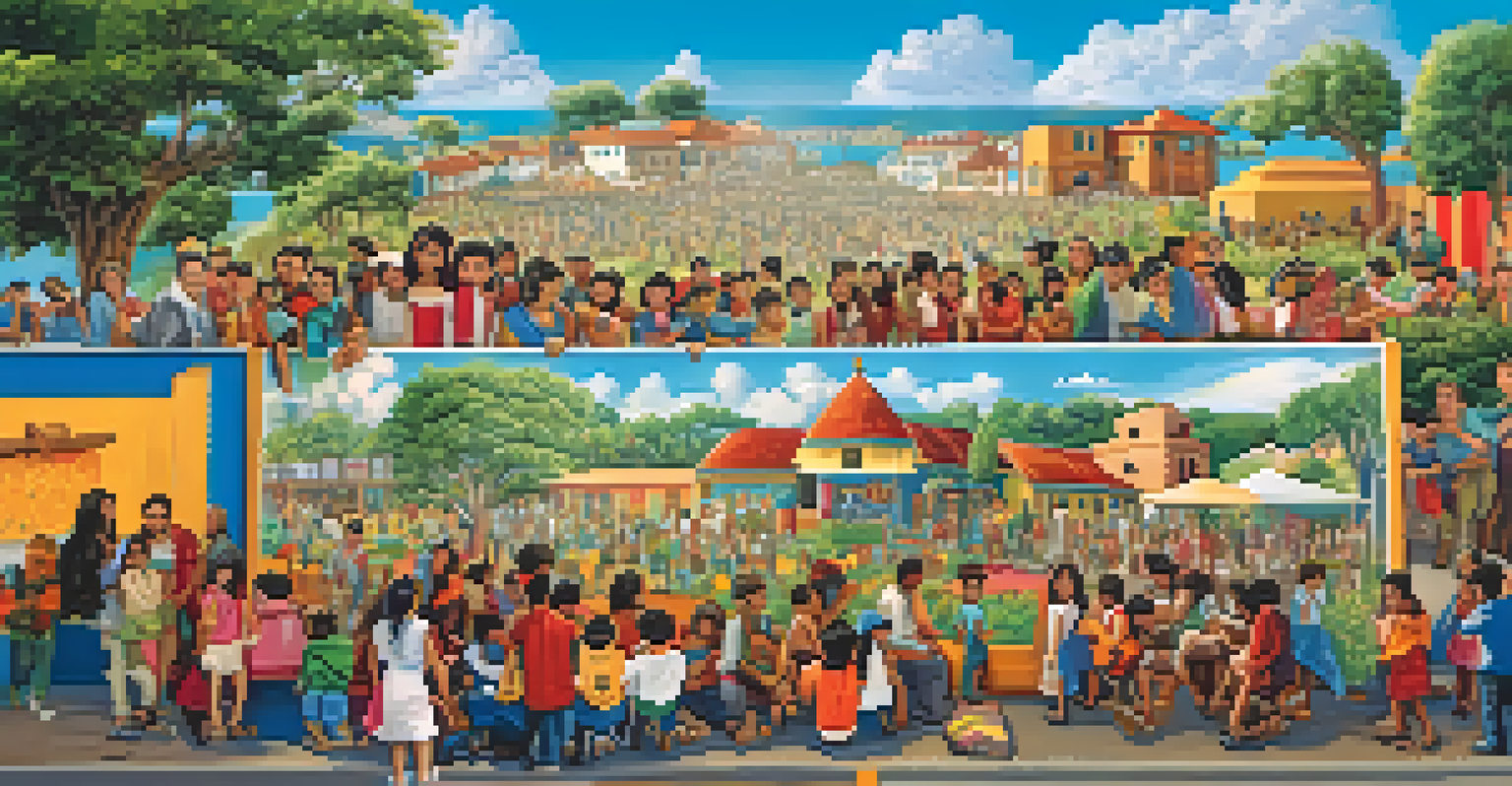Contemporary Peruvian Artists Shaping the Global Art Scene

Introduction to Contemporary Peruvian Art
Peruvian art has undergone a significant transformation in recent years, evolving from traditional styles to a more contemporary expression. This shift reflects not only the rich cultural heritage of Peru but also the influences of globalization. As artists embrace modern techniques and themes, they are gaining recognition on international platforms, showcasing the depth of their creativity.
Art must be an integral part of our society and our culture, and it must be a reflection of who we are as people.
Today’s Peruvian artists are not just preserving their rich historical narrative; they are also challenging societal norms and exploring new mediums. From painting to installation art, the diversity in their work speaks volumes about their experiences and perspectives. This blend of tradition and innovation is what sets them apart in the global art scene.
In this article, we'll delve into several contemporary Peruvian artists who are making waves. Their unique contributions are not only redefining what it means to be an artist in Peru but are also adding vibrant new voices to the international art dialogue.
The Rise of Visual Storytelling in Peruvian Art
Visual storytelling has become a powerful tool for contemporary Peruvian artists, allowing them to convey complex narratives through their work. Artists like Lika Mutal utilize elements of their cultural heritage to weave stories that resonate with both local and global audiences. This technique not only celebrates their roots but also invites viewers to witness the evolution of their identity.

Through various mediums, including photography and mixed media, these artists illustrate the struggles, triumphs, and beauty of life in Peru. For instance, Lika’s installations often incorporate traditional textiles that speak to the history of indigenous cultures. By doing so, she creates a bridge between the past and present, making her work deeply relatable.
Embracing Identity in Peruvian Art
Contemporary Peruvian artists explore themes of identity and heritage, challenging societal norms while celebrating diversity.
Visual storytelling in Peruvian art transcends language barriers, engaging audiences from diverse backgrounds. This approach fosters a sense of connection, encouraging viewers to reflect on their own stories and experiences, thus enriching the global narrative.
Exploring Identity and Heritage Through Art
Many contemporary Peruvian artists focus on themes of identity and heritage, using their work to explore what it means to belong. Artists like Wendy Vásquez tackle issues of gender and ethnicity, challenging stereotypes and celebrating diversity within Peruvian society. Such explorations not only reflect personal experiences but also resonate with broader social movements.
In every work of art, there is a story that speaks to the human experience, transcending boundaries and connecting us all.
Wendy’s art often incorporates elements of her Afro-Peruvian heritage, shining a light on the rich but often overlooked contributions of this community. By doing so, she creates a platform for dialogue and understanding, inviting viewers to engage with these important conversations. Her work exemplifies how art can be a catalyst for change.
The exploration of identity in contemporary Peruvian art is crucial, as it allows artists to reclaim narratives that may have been marginalized. This focus not only empowers the artists themselves but also inspires audiences to reflect on their own identities, fostering a sense of unity in diversity.
Innovative Use of Materials in Contemporary Art
Peruvian artists are increasingly experimenting with unconventional materials, pushing the boundaries of traditional art forms. For instance, the works of Teresa Burga often incorporate everyday items, transforming them into thought-provoking pieces that challenge perceptions of value and artistry. This innovative approach is a hallmark of contemporary Peruvian art.
By utilizing materials that resonate with the local context, these artists create pieces that are both accessible and meaningful. This not only highlights the beauty of resourcefulness but also connects the artwork to the cultural landscape of Peru. Such practices encourage sustainability while celebrating local craftsmanship.
Innovative Materials in Art
Artists are pushing boundaries by using unconventional materials, transforming everyday items into thought-provoking art.
The innovative use of materials also invites viewers to reconsider what constitutes art. By breaking down barriers between high art and everyday items, Peruvian artists are redefining the art world, making it more inclusive and reflective of the diverse experiences that shape it.
The Role of Community in Artistic Development
Community plays a vital role in the development of contemporary Peruvian artists, shaping their work and influence. Many artists engage with local communities, drawing inspiration from collective experiences and histories. This connection fosters a sense of belonging and nurtures a supportive environment for artistic expression.
Collaborative projects and community-based initiatives are becoming more common, allowing artists to work alongside locals to create art that reflects shared narratives. For example, the work of the collective 'La Galería de la Memoria' focuses on preserving stories of resilience and hope within communities affected by conflict. Such projects empower individuals and strengthen community bonds.
This emphasis on community not only enhances the artists’ work but also enriches the cultural landscape of Peru. By involving diverse voices in the creative process, these artists contribute to a more inclusive representation of society, ultimately shaping a vibrant and dynamic art scene.
Peruvian Artists on the Global Stage
Contemporary Peruvian artists are increasingly gaining recognition on the global stage, showcasing their work in prestigious exhibitions and art fairs. Events like Art Basel and the Venice Biennale have become platforms for these artists to share their unique perspectives with international audiences. This exposure is crucial for expanding their reach and influence.
Artists such as Fernando Bryce have gained acclaim for their thought-provoking pieces that address historical and contemporary issues. His work, often characterized by meticulous detail, invites viewers to reflect on the complexities of memory and identity. Such recognition not only elevates individual artists but also highlights Peru’s rich cultural landscape.
Community's Role in Art Development
Local communities significantly influence contemporary Peruvian artists, fostering collaboration and shared narratives.
The global interest in Peruvian art signifies a shift in how contemporary art is perceived, moving beyond traditional boundaries. As these artists continue to showcase their work internationally, they are shaping the narrative of contemporary art and inspiring future generations.
Challenges Faced by Contemporary Peruvian Artists
Despite the successes of contemporary Peruvian artists, they still face numerous challenges in their careers. Issues such as funding, access to resources, and limited exposure can hinder their ability to create and showcase their work. These obstacles can be particularly pronounced for emerging artists who may lack the support needed to navigate the art world.
Moreover, the global art market can be daunting, with many artists struggling to find their place within it. The competition is fierce, and without proper representation, their work might go unnoticed. This underscores the importance of community support, mentorship programs, and platforms that promote local artists.

Despite these challenges, the resilience and creativity of Peruvian artists shine through. They continue to forge connections, adapt to changing circumstances, and push the boundaries of their art, proving that the spirit of innovation is alive and well in Peru.